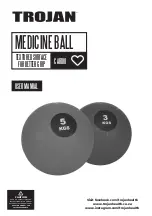
Underground Corrosion Control
3:12
CP 1 – Cathodic Protection Tester Course Manual
©
NACE International, 2000
02/01/05
ZINC
Zinc anodes are also commercially available in two alloys, one for use in
soils and the other for seawater applications. Zinc may undergo rapid
intergranular corrosion at temperatures above 120
°
F (49
°
C). At
temperatures above 130
°
F (54
°
C) and particularly in the presence of
carbonates, zinc can passivate and the potential of the passive film can
become more noble than steel, leading to corrosion of the steel.
ALUMINUM
Aluminum alloy anodes are used primarily in seawater applications and are
produced in a variety of alloys, of which the mercury and indium alloys are
the most common. The indium alloy has a slightly higher corrosion
potential but is less efficient than the mercury-containing alloy. Aluminum
is preferred for seawater applications because it has a much lower
consumption rate than magnesium or zinc.
Aluminum anodes are not used in fresh water, except as impressed current
anodes. They are not used underground.
An alloy of aluminum-zinc and indium is used as a sacrificial anode on
reinforced concrete structures.
Aluminum anodes are commonly used in process vessels containing brine.
At temperatures above 120
°
F (49
°
C), however, the current output may be
reduced.
GALVANIC ANODE EFFICIENCY
The efficiency of a galvanic anode depends on the alloy of the anode and
the environment in which it is installed. The consumption of any metal is
directly proportional to the amount of current discharged from its surface.
For galvanic anodes, part of this current discharge is due to the cathodic
protection current provided to the structure and part is caused by local
corrosion cells on it surface. Anode efficiency is the ratio of metal
consumed producing useful cathodic protection current to the total metal
consumed. For magnesium, anode efficiency is generally about 50%.
Summary of Contents for CP 1
Page 1: ...CP 1 Cathodic Protection Tester Course Manual February 2005 NACE International 2000 ...
Page 265: ......
Page 266: ......
Page 267: ......
Page 268: ......
Page 301: ...RP0169 2002 32 NACE International ISBN 1 57590 035 1 ...
Page 535: ...TM0101 2001 24 NACE International ISBN 1 57590 137 4 ...
















































